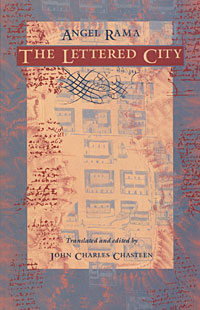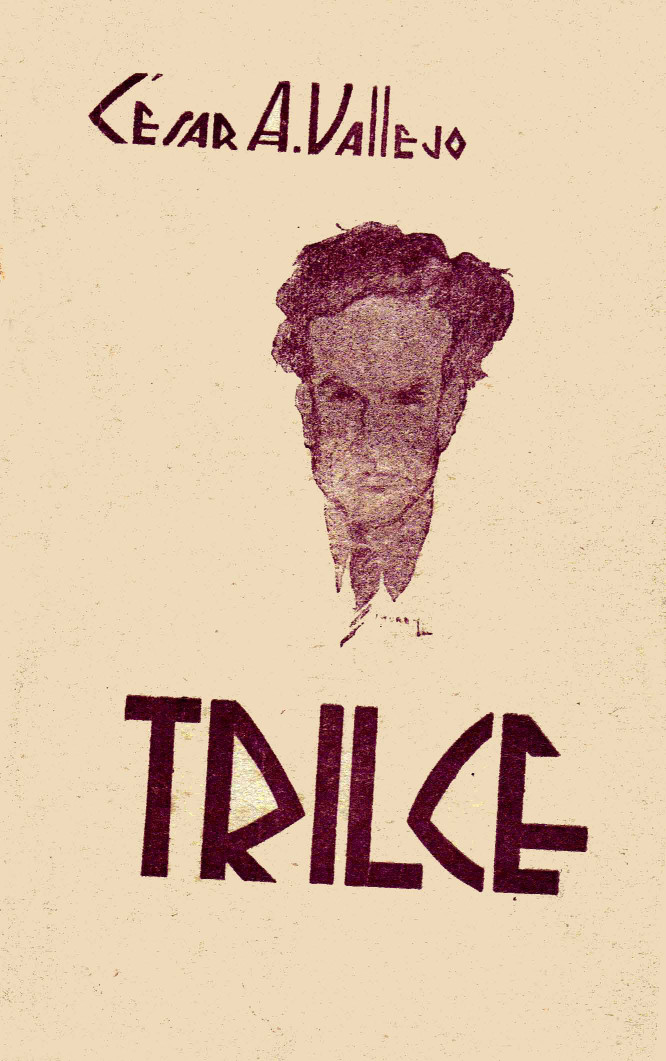Angel Rama: The Lettered City (1984–) [Spanish, English]
Filed under book | Tags: · city, education, history, history of literature, language, latin america, literary theory, literature, space

“Angel Rama’s La ciudad letrada was published in 1984, shortly after he had died in a plane accident in Spain. Since then, it has quickly established itself as one of the most daring, perspicacious and innovative analyses of Latin American history, literature and political culture. However, because it was not completed due to his untimely death, the book was an incomplete synthesis of several decades of literary criticism and history. Even if Rama had not written La ciudad letrada, his place on the canon of Latin American letters would have been secured by his pioneering work on intra-American comparative literary studies. Rama, appropriating a term from Cuban anthropologist Fernando Ortiz, introduced into Latin American literary studies the term ‘transculturation’, which sought to conceptualize the interaction between indigenous, criollo and mestizo cultures in Latin America, and in this way he gave a hermeneutic key for unlocking many key texts of Latin American letters.
Rama’s book is surely about letters, literature and writing, but it is also about cities, space, spatialization and the relationship between the syntax of languages and the order of space. The book is, in fact, what one may call a philosophical-historical-cultural essay that uses literature and the ‘writer’–el letrado–to elaborate a wide-ranging interpretative thesis about Latin America as a cultural unit. Its genre is thus not a literary theory, comparative literature, or even cultural studies, even if it contributes to these. In German one calls this genre Geistesgeschichte, which is neither a spiritual nor an intellectual history, but rather a history of the animating logic of a culture.” (from a review by Eduardo Mendieta, City, 2006)
First published by Ediciones del Norte, Hanover/NH, 1984
With an Introduction by Hugo Achugar
Publisher Arca, Montevideo, 1998
ISBN 9974400244
126 pages
English edition
Translated and with an Introduction by John Charles Chasteen
Publisher Duke University Press, 1996
ISBN 0822317575, 9780822317579
141 pages
via Oral Majority
Commentary (Cora Gorman Malone, 2010, in EN)
Commentary (Brantley Nicholson, 2011, in EN)
Publisher (EN)
La ciudad letrada (Spanish, 1984/1998, 6 MB, no OCR)
The Lettered City (English, pages 40 and 56 missing, 1996, 9 MB, no OCR)
César Vallejo: Trilce (1922–) [Spanish, English]
Filed under poetry | Tags: · avant-garde, language, poetry

Trilce is the second and the most well-known book of poetry by the Peruvian author César Vallejo.
Pared of all ornamental language, Trilce introduces the wrenched syntax that allows Vallejo to get beyond the constraints of received linguistic conventions. Writing in A History of Peruvian Literature, James Higgins catalogues the elements of Vallejo’s diction: “Vallejo confounds the reader’s expectations by his daring exploitation of the line pause, which often leaves articles, conjunctions and even particles of words dangling at the end of a line, by his frequent resort to harsh sounds to break the rhythm, by employing alliterations so awkward as to be tongue-twisters. He distorts syntactic structures, changes the grammatical function of words, plays with spelling. His poetic vocabulary is frequently unfamiliar and ‘unliterary,’ he creates new words of his own, he often conflates two words into one, he tampers with cliches to give them new meaning, he plays on the multiple meaning of words and on the similarity of sound between words. He repeatedly makes use of oxymoron and paradox and, above all, catachresis, defamiliarising objects by attributing to them qualities not normally associated with them.”
D. P. Gallagher suggests in Modern Latin American Literature that Vallejo was “perhaps the first Latin American writer to have realized that it is precisely in the discovery of a language where literature must find itself in a continent where for centuries the written word was notorious more for what it concealed than for what it revealed, where ‘beautiful’ writing, sheer sonorous wordiness was a mere holding operation against the fact that you did not dare really say anything at all.” (from Vallejo’s biography by Poetry Foundation)
With a Foreword by Antenor Orrego
Publisher Talleres tipográficos de la Penitenciaría, Lima, 1922
136 pages
via Biblioteca BBVA
Commentary (Michelle Clayton, Poetry in Pieces: César Vallejo and Lyric Modernity, 2011, 329 pp)
Wikipedia (ES)
Wikipedia (EN)
PDF (Spanish), other editions: 1961, 1982, 1986, 1987
HTML (Spanish/English, trans. Clayton Eshleman, 2007)
Almanacco Letterario Bompiani: Elettronica e letteratura (1961) [Italian]
Filed under magazine | Tags: · automation, computing, digital humanities, humanities computing, language, linguistics, literary theory, literature, philology, robots

An early document from the field of humanities computing, today widely known as digital humanities.
Elettronica e letteratura is the title of the thematic section of an annual literary almanac published by Valentino Bompiani since 1925. The section contains the historical excursions by Rinaldo De Benedetti, Michele Pacifico and Franco Lucentini, and the reports on scientific research sponsored by Olivetti and IBM Italy and conducted by Roberto Busa, Stanislao Valsesia, Carlo Tagliavini, Silvio Ceccato, and Nanni Balestrini.
In one of the articles, the Jesuit priest Roberto Busa, often cited as the pioneer of the field, gives an account of his work on Index Thomisticus, a complete lemmatization of the works of Thomas Aquinas, started in the late 1940s (elsewhere: “During the World War II, between 1941 and 1946, I began to look for machines for the automation of the linguistic analysis of written texts. I found them, in 1949, at IBM in New York City.”).
Included is also a survey about the potential use of computers in literary scholarship (including a response from Pier Paolo Pasolini), entitled “Le due culture” [Two Cultures], and an essay by Umberto Eco.
in Almanacco Letterario Bompiani 1962: Le applicazioni dei calcolatori elettronici alle scienze morali e alla letteratura
Edited by Sergio Morando
Publisher Bompiani, Milan, December 1961
pages 87-188 (of 324)
via P–DPA log
Commentary (Adriano Comai, 1985, in Italian)
PDF (62 MB; large portion of the survey missing, 313ff)
See also an online emulator of Tape Mark 1 and Monoskop page on digital humanities.
Comments (2)
